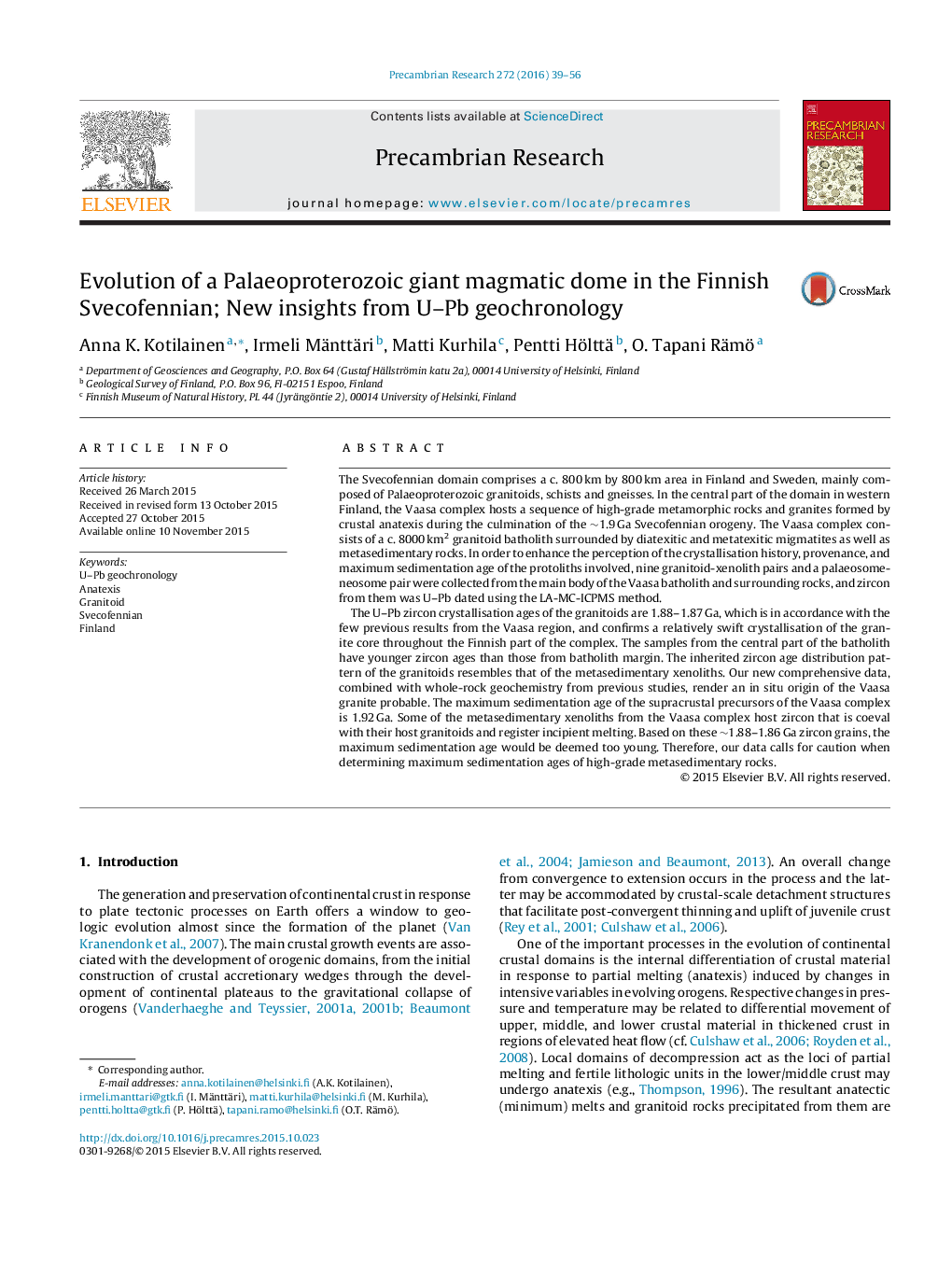| کد مقاله | کد نشریه | سال انتشار | مقاله انگلیسی | نسخه تمام متن |
|---|---|---|---|---|
| 4722435 | 1639603 | 2016 | 18 صفحه PDF | دانلود رایگان |

• The Vaasa complex implies rapid magma generation and emplacement at 1.88–1.87 Ga.
• The maximum sedimentation age of the source of the Vaasa complex is 1.92 Ga.
• The age distribution of inherited zircon favours an in situ origin for the Vaasa granitoid batholith.
• Zircon ages vary from young to old from granite core to margin.
The Svecofennian domain comprises a c. 800 km by 800 km area in Finland and Sweden, mainly composed of Palaeoproterozoic granitoids, schists and gneisses. In the central part of the domain in western Finland, the Vaasa complex hosts a sequence of high-grade metamorphic rocks and granites formed by crustal anatexis during the culmination of the ∼1.9 Ga Svecofennian orogeny. The Vaasa complex consists of a c. 8000 km2 granitoid batholith surrounded by diatexitic and metatexitic migmatites as well as metasedimentary rocks. In order to enhance the perception of the crystallisation history, provenance, and maximum sedimentation age of the protoliths involved, nine granitoid-xenolith pairs and a palaeosome-neosome pair were collected from the main body of the Vaasa batholith and surrounding rocks, and zircon from them was U–Pb dated using the LA-MC-ICPMS method.The U–Pb zircon crystallisation ages of the granitoids are 1.88–1.87 Ga, which is in accordance with the few previous results from the Vaasa region, and confirms a relatively swift crystallisation of the granite core throughout the Finnish part of the complex. The samples from the central part of the batholith have younger zircon ages than those from batholith margin. The inherited zircon age distribution pattern of the granitoids resembles that of the metasedimentary xenoliths. Our new comprehensive data, combined with whole-rock geochemistry from previous studies, render an in situ origin of the Vaasa granite probable. The maximum sedimentation age of the supracrustal precursors of the Vaasa complex is 1.92 Ga. Some of the metasedimentary xenoliths from the Vaasa complex host zircon that is coeval with their host granitoids and register incipient melting. Based on these ∼1.88–1.86 Ga zircon grains, the maximum sedimentation age would be deemed too young. Therefore, our data calls for caution when determining maximum sedimentation ages of high-grade metasedimentary rocks.
Journal: Precambrian Research - Volume 272, January 2016, Pages 39–56